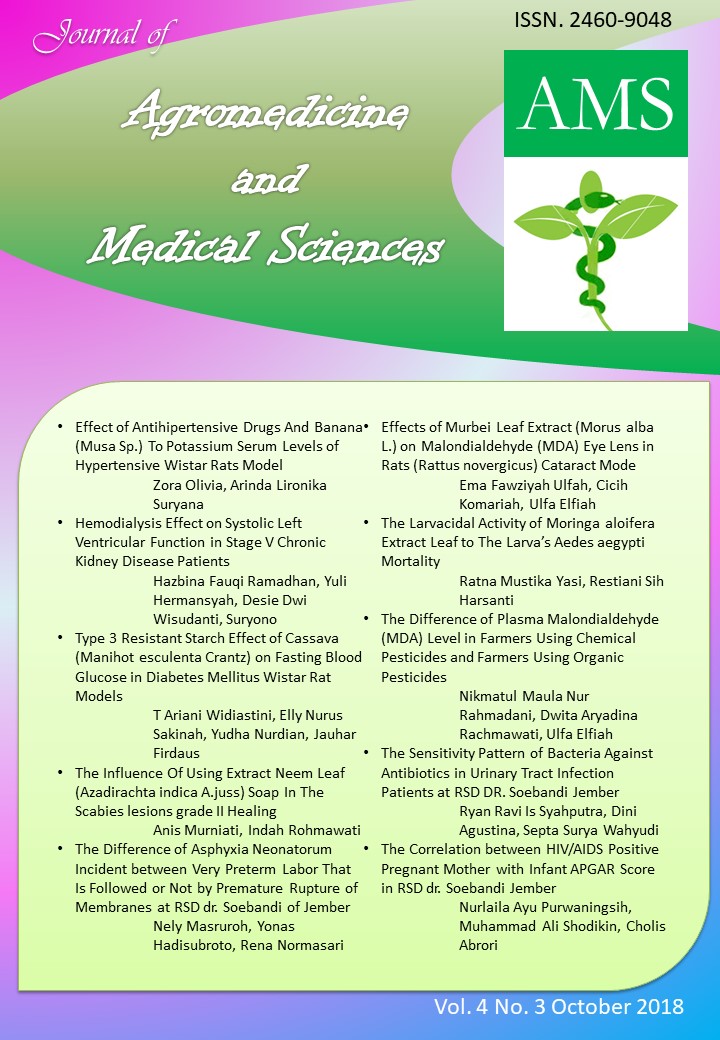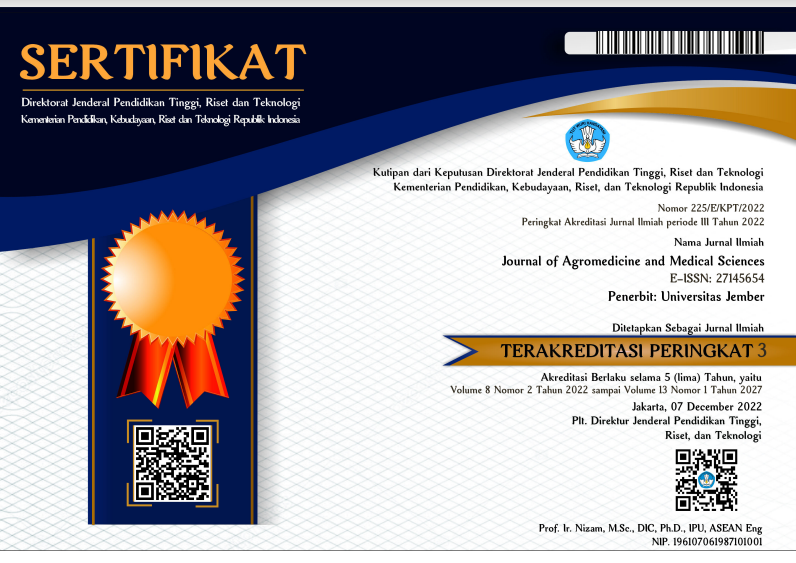Effects of Murbei Leaf Extract (Morus alba L.) on Malondialdehyde (MDA) Eye Lens in Rats (Rattus novergicus) Cataract Model
DOI:
https://doi.org/10.19184/ams.v4i3.6785Abstract
Cataract is a degenerative disease and one of the leading causes of blindness in Indonesia and in the world. Free radical formation leads to pathological reactions in the lens that can induce lipid peroxidation that produces malondialdehyde (MDA). Mulberry leaf (Morus alba L.) is one of the plants rich in antioxidants. The purpose of this study was to determine the effect and effective dose of mulberry leaf extract on MDA content of eye lens in rats cataract model. This study is true experimental with posttest only control group design. This study used 7 groups, each 5 tails. Normal control groups were not treated. The negative control group induced sodium selenite 25 μmol / kgBW and was given 0.1% HPMC eye drops. The treatment group induced sodium selenite 25 μmol / kgBB and given 0.05%, 0.1%, 0.2%, 0.3% and 0.4% mulberry leaf extract for 14 days. Measurement of MDA lens concentration are using MDA-TBA method. Data analyzed by using one way Anova test showed significant result with value p = 0,000 (p <0,05). Based on the results of this study it can be concluded that mulberry leaf extract has an effect on decreasing MDA lens in rats cataract model. Among the concentrations used, the concentrations that showed the lowest decrease in MDA concentration were 0.4%.
Keywords: cataract, sodium selenite, malondialdehid, Morus alba L






















